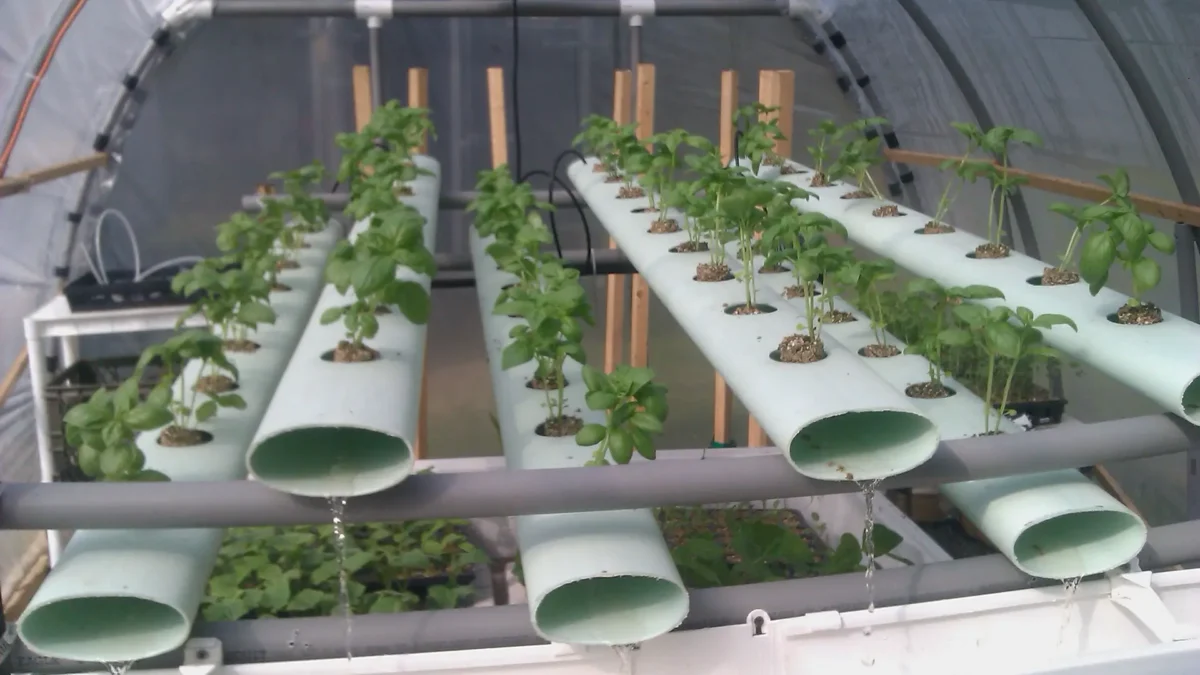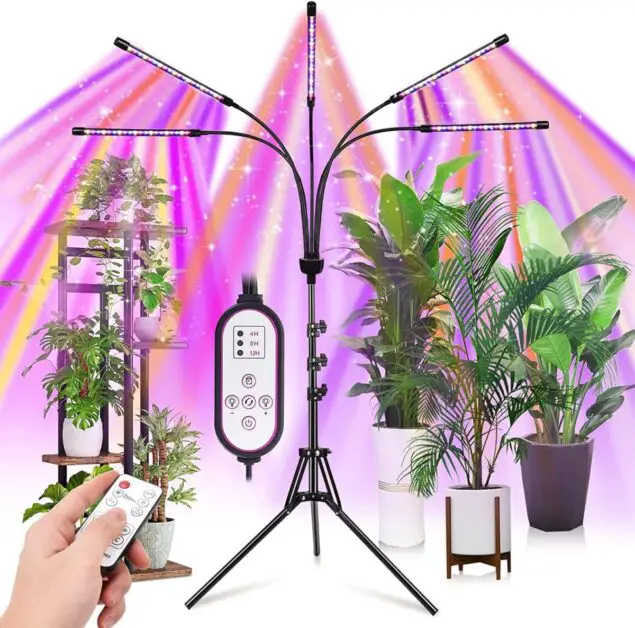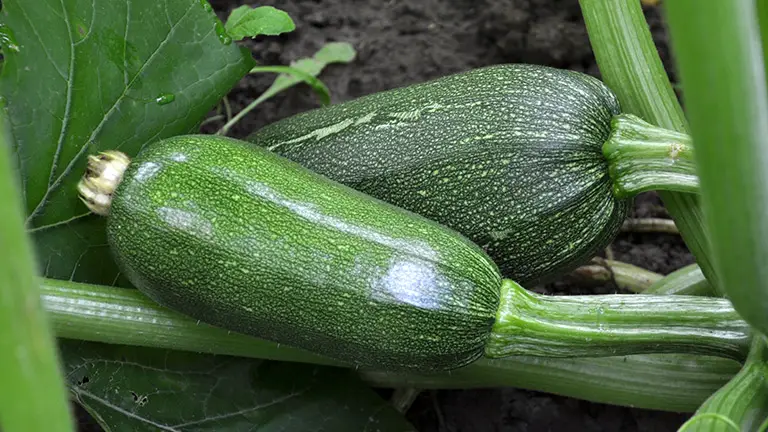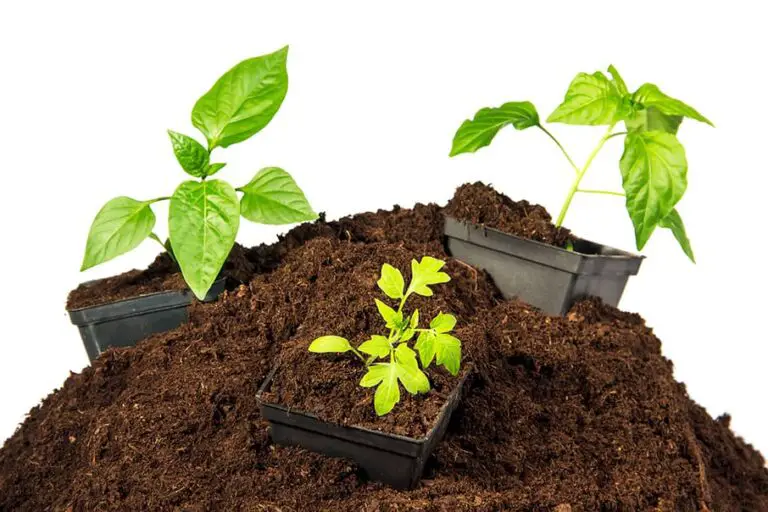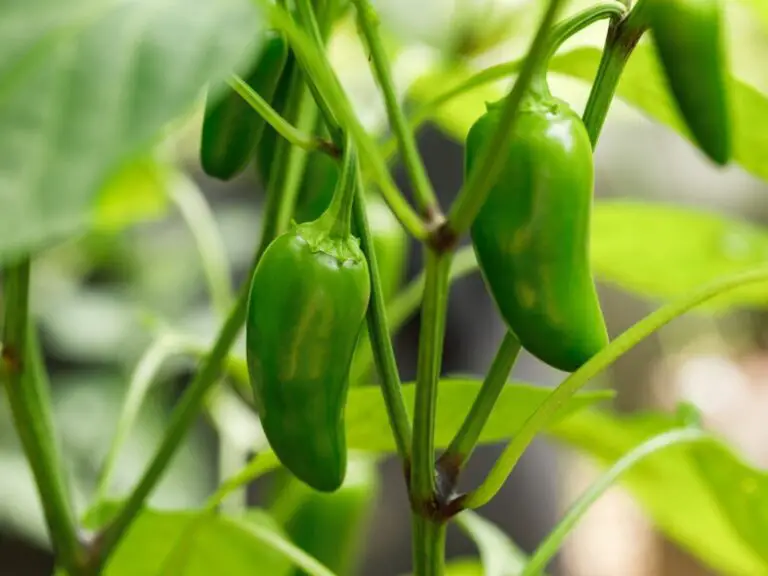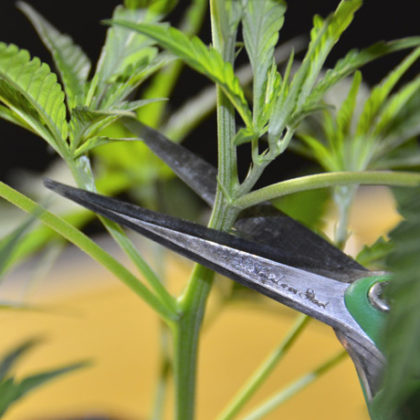How to Harvest More Potatoes from Your Hydroponic Garden than Ever Before
Do you want to harvest a bumper crop of potatoes from your hydroponic garden? Say goodbye to disappointing yields and hello to abundance! In this guide, we’ll uncover the secrets to maximizing your potato harvest like never before. From selecting the right potato varieties to optimizing nutrient delivery and growing conditions, we’ll equip you with expert tips and proven techniques. Whether you’re a seasoned hydroponic gardener or just starting out, get ready to dig deep and unlock the potential of your potato harvest. Get ready to enjoy a bounty of homegrown spuds that will leave your friends and family amazed!
Table of Contents
The Benefits of Growing Potatoes in a Hydroponic Garden
Hydroponic gardening has gained popularity amongst gardening enthusiasts, and for good reason. When it comes to growing potatoes, utilizing a hydroponic system offers several benefits that can enhance both the quality and quantity of your harvest.

- Controlled Environment: Hydroponic systems offer precise control over growing conditions, including soil quality, pH levels, and nutrient availability, ensuring optimal growth conditions for potatoes.
- Space Efficiency: Vertical growth method in hydroponic allow for the maximization of space, enabling growers to produce more potatoes per square foot compared to traditional soil-based methods.
- Water Conservation: Hydroponic systems recycle water through the root zone, reducing overall water consumption and minimizing the risk of overwatering or underwatering, which can hinder potato growth.
- Disease Control: Soil-borne diseases are less likely to affect potatoes in a hydroponic systems due to the absence of soil as a medium for pathogens. Additionally, controlling the nutrient solution minimizes the presence of harmful pathogens, enhancing disease control.
In conclusion, hydroponic gardening offers numerous benefits for growing potatoes. The ability to control the growing environment, save space, improve water efficiency, and enhance disease control make it an attractive option for potato enthusiasts. By utilizing a hydroponic system, you can optimize your potato harvest and enjoy a bountiful supply of fresh homegrown tubers.
Selecting the Right Potato Varieties for Hydroponic Cultivation
In hydroponic cultivation, selecting the right potato varieties is crucial to maximize your yield and achieve optimal growth. Not all potato varieties are well-suited for hydroponic systems, so it’s important to choose those that thrive in this controlled environment. When choosing potato varieties for hydroponic cultivation, consider factors such as disease resistance, plant size, and maturity period.
| Variety | Advantages | Disadvantages | Characteristics |
|---|---|---|---|
| Yukon Gold | – Excellent flavor and texture- Medium starch content- Resistant to scab disease | – Requires consistent moisture- May not yield as heavily as some other varieties | – Golden-yellow skin and flesh- Ideal for boiling, baking, and frying |
| Red Norland | – Early maturing- Thin skin (edible)- Good disease resistance | – Lower starch content- May not store well | – Red skin with white flesh- Suitable for salads, boiling, and roasting |
| Russet Burbank | – High yield potential- Versatile culinary use- Long storage life | – Longer growing period- Prone to scab and other diseases | – Rough brown skin and white flesh- Classic baking potato |
| Fingerling Potatoes | – Unique shape and flavor- Tender skin (edible)- Space-efficient growth | – Lower yield per plant- Longer growing season | – Elongated, finger-like tubers- Great for roasting and salads |
Remember that while any potato variety can be used for hydroponic cultivation, these specific varieties tend to perform well in hydroponic systems.
Understanding the Basics of Hydroponic Systems for Potato Growth
Hydroponic systems offer a unique and efficient way to cultivate potatoes. By understanding the basics of these systems, you can ensure optimal growth and maximize your potato yield.

One key aspect of hydroponics is the absence of soil. Instead, plants are grown in nutrient-rich water solutions that deliver all the necessary minerals and elements directly to the roots.
- Nutrient Film Technique (NFT): The NFT system circulates a shallow stream of nutrients solution over the roots, promoting efficient nutrient absorption and faster potato growth while reducing the risk of soil-borne diseases and pests.
- Oxygenation: Proper oxygenation of the nutrient solution is essential for root health and overall plant growth. Using air stones or diffusers helps maintain adequate oxygen levels, preventing root rot and improve nutrient uptake.
- pH Regulation: Monitoring and adjusting the pH levels of the nutrient solution is crucial for nutrient availability and optimal potato growth. Regular pH maintenance prevents deficiencies or toxicities that could impede potato development.
Creating the Ideal Growing Environment for Maximum Potato Yield
To achieve maximum potato yield in a hydroponic system, it is essential to create the ideal growing environment. This starts with selecting the right location for your setup.

- Sunlight Exposure:
- Choose a location with ample sunlight, preferably facing south, as potatoes require at least six hours of direct sunlight daily.
- Ensure the temperature falls within the range of 50-80°F (10-27°C), as extreme temperatures can adversely affect potato growth.
- Growing Medium:
- Opt for a well-draining medium to prevent excessive moisture and root diseases. Suitable options include:
- Perlite
- Vermiculite
- Coco coir
- Opt for a well-draining medium to prevent excessive moisture and root diseases. Suitable options include:
- Nutrient Management:
- Maintain appropriate nutrient levels in the hydroponic solution.
- Essential macronutrients for healthy potato growth:
- Potassium
- Phosphorus
- Nitrogen
- Use a complete and balanced nutrient solution specifically formulated for potatoes to ensure optimal nutrient uptake.
- Humidity Control:
- Monitor and regulate humidity levels:
- High humidity can encourage fungal diseases.
- Low humidity can lead to excessive transpiration and wilting.
- Aim for a humidity level of 50-70% to create a favorable environment for potato plants.
- Monitor and regulate humidity levels:
- Ventilation:
- Proper ventilation is crucial:
- Prevents stagnant air buildup, which can contribute to disease development.
- Consider using fans or installing an exhaust system for consistent fresh air supply.
- Proper ventilation is crucial:
- pH Level Maintenance:
- Potatoes prefer a slightly acidic pH range of 5.8-6.2.
- Regularly monitor the pH of your nutrient solution and make adjustments as needed to optimize nutrient availability and uptake.
By creating an ideal growing environment with proper lighting, nutrients, humidity control, ventilation, and pH maintenance, you can maximize your potato yield in a hydroponic system. Follow these guidelines to provide the best conditions for your potato plants’ growth and achieve bountiful harvests.
Using Burpee Natural Fine Grade Horticultural Vermiculite in my gardening endeavors has been a game-changer. Its lightweight and moisture-retentive properties make it an ideal addition to my soil mixes, especially for my hydroponic setups. I’ve noticed a significant improvement in soil aeration and moisture retention, leading to healthier root growth and overall plant vitality. Additionally, its pH-neutral nature ensures compatibility with a wide range of plants, giving me peace of mind that my garden is in good hands.
However, I did encounter some challenges with dust generation during handling, but taking precautions such as wearing a mask and working in well-ventilated areas helped mitigate this issue. Overall, Burpee Natural Vermiculite has proven to be a valuable asset in my gardening toolkit, enhancing soil quality and contributing to the success of my gardening endeavors. Whether you’re a beginner or seasoned gardener, I highly recommend giving it a try for improved plant health and growth.
- Excellent Soil Aeration: Vermiculite helps improve soil structure by increasing aeration, promoting healthy root growth for plants.
- Moisture Retention: It has excellent moisture-holding capacity, ensuring consistent hydration for plants, especially in hydroponic or container gardening.
- Nutrient Retention: Vermiculite can hold onto nutrients, releasing them gradually to plants as needed, enhancing overall plant health.
- pH Neutral: It is pH neutral, making it suitable for a wide range of plants and gardening applications without affecting soil acidity.
- Lightweight: Being lightweight, vermiculite is easy to handle and mix into soil or growing media, minimizing physical strain during gardening tasks.
- Sterile: Burpee Natural Vermiculite is sterile, reducing the risk of introducing pests, diseases, or weed seeds into your garden.
- Heat Insulation: Vermiculite provides insulation to plant roots, protecting them from temperature fluctuations and extremes.
- Improves Seed Germination: Adding vermiculite to seed starting mixes improves germination rates and seedling growth, giving plants a healthy head start.
- Environmentally Friendly: Burpee Natural Vermiculite is derived from natural minerals and is environmentally friendly, making it a sustainable choice for gardeners.
- Expensive: Compared to other soil amendments, vermiculite can be relatively expensive, especially when used in large quantities.
- Limited Nutrient Content: While it helps retain nutrients, vermiculite itself does not provide significant nutritional value to plants and may require supplemental fertilization.
- Dust Concerns: Handling vermiculite can generate dust particles, which may pose respiratory risks if inhaled, necessitating caution during use.
- Waterlogging Risk: Excessive use of vermiculite in soil mixes can lead to waterlogging and drainage issues, especially in heavy soils or containers without adequate drainage.
- pH Adjustment: Vermiculite’s neutral pH may require additional pH adjustments in certain gardening situations, depending on specific plant requirements.
- Non-Renewable Resource: Vermiculite is a non-renewable resource, and its mining process can have environmental impacts if not managed sustainably.
- Storage Challenges: Proper storage is necessary to prevent vermiculite from absorbing moisture and clumping, which can affect its usability over time.
Choosing the Best Nutrient Solution for Optimal Potato Growth
When it comes to growing potatoes in a hydroponic garden, selecting the right nutrient solution is crucial for achieving optimal growth and yield. Potatoes require a balance of essential nutrients to thrive, including nitrogen, phosphorus, potassium, and trace elements.

- Balanced Nutrient Solution: A popular choice for potatoes is a nutrient solution with a balanced NPK ratio of 10-5-20. This formula provides essential nutrients like nitrogen for leaf and stem growth, phosphorus for root development, and potassium for overall plant health and tuber formation.
- Customization: It’s essential to note that nutrient ratios may vary based on potato variety and growth stage. Consulting a nutrient calculator or expert can provide precise recommendations tailored to your specific needs.
- pH Regulation: Potatoes thrive in a slightly acidic pH range of 5.8 to 6.5. Regular monitoring and adjustment of the pH level using pH adjusters ensure optimal nutrient uptake and prevent deficiencies or toxicities. pH up or pH down solutions can help maintain the desired pH level in the nutrient solution.
Overall, choosing the best nutrient solution for optimal potato growth in a hydroponic system requires careful consideration of the NPK ratio, nutrient concentration, and pH level. By providing the right balance of essential nutrients and maintaining proper pH levels, you can ensure healthy and productive potato plants in your hydroponic garden.
Properly Preparing Seed Potatoes for Hydroponic Planting
Preparing seed potatoes for hydroponic planting is a crucial step in ensuring successful cultivation. Before planting, it is essential to select high-quality seed potatoes that are disease-free and have a higher chance of producing healthy and robust plants.

- Inspect Seed Potatoes:
- Examine the seed potatoes for signs of disease or damage.
- Look out for:
- Soft spots
- Blemishes
- Discoloration
- Discard any potatoes with these characteristics to prevent disease spread to other plants in the hydroponic system.
- Disinfection:
- Soak the seed potatoes in a solution of diluted hydrogen peroxide or an approved disinfectant.
- This process eliminates pathogens present on the potato surface.
- Drying:
- After disinfection, allow the seed potatoes to dry in a cool and well-ventilated area.
- This promotes the development of a protective layer called the suberization layer on the potato skin.
- The suberization layer helps prevent pathogen entry and excessive moisture during planting.
By properly preparing seed potatoes for hydroponic planting, growers can ensure the health and vitality of their potato plants, ultimately leading to a more successful and fruitful harvest in the hydroponic system.
Planting Techniques to Maximize Potato Production in a Hydroponic System
One of the key factors in maximizing potato production in a hydroponic system is choosing the right planting techniques. Proper planting techniques ensure that the potatoes have optimal growing conditions, allowing them to develop to their full potential. Here are some important steps to follow:
By following these planting techniques, gardeners can give their hydroponic potatoes the best start possible, setting the stage for successful and productive growth.
Managing Water and Nutrient Levels for Healthy Potato Plants
To ensure healthy potato plants in a hydroponic system, it is crucial to closely manage water and nutrient levels. The success of your potato crop depends on providing the right amount of water and nutrients at the right time.
- Manage Watering: Water is essential for plant growth, but it’s crucial to avoid overwatering, which can lead to root rot. Ensure proper drainage in your hydroponic system to prevent waterlogging. Monitor moisture levels in the growing medium and establish a reliable watering schedule . Utilize moisture sensors to maintain optimal water levels for your potato plants.
- Balanced Nutrient Levels: Nutrient management is key for healthy potato growth. Use a well-balanced nutrient solution tailored for potatoes, providing essential macronutrients and micronutrients like nitrogen, phosphorus, potassium, calcium, magnesium, and trace minerals. Different growth stages require specific nutrient ratios, so adjust accordingly.
- Monitor pH and Nutrient Levels: Regularly check and adjust the pH and nutrient levels in the solution to prevent imbalances and deficiencies. By staying vigilant and making necessary adjustments, you can ensure your potato plants receive the nutrients they need for robust growth and abundant yields.
In the following sections, we will explore in detail the best practices for providing adequate lighting and the importance of regular pruning and training in hydroponic potato gardens. By implementing these techniques, you can further enhance the growth and productivity of your potato plants. Stay tuned!
Providing Adequate Lighting for Enhanced Potato Growth
To enhance the growth of potatoes in a hydroponic system, providing adequate lighting is crucial. Potatoes are known as sun-loving plants, requiring 8 to 12 hours of direct light per day for optimal growth. However, when cultivating potatoes hydroponically, it is essential to mimic the natural sunlight conditions and ensure the plants receive sufficient light to thrive.

- LED Grow Lights:
- LED grow lights are energy-efficient and provide the full light spectrum necessary for plant growth.
- Recommended light intensity for potatoes:
- Vegetative stage: 300 to 600 µmol/m²/s
- Flowering and tuber formation stages: 600 to 1000 µmol/m²/s
- Adjust the distance between the plants and the grow lights to achieve the desired light intensity.
- Light Exposure Duration:
- Potato plants require:
- Vegetative stage: 16 to 18 hours of light per day
- Flowering and tuber formation stages: 12 to 14 hours of light per day
- Use a timer to automate the lighting schedule for consistent and uninterrupted exposure.
- This natural day-night cycle promotes healthy growth and development.
- Potato plants require:
Remember these guidelines to ensure your hydroponic potato plants receive the right amount of light for optimal growth! 🌱🥔💡In the next section, we will explore the importance of regular pruning and training techniques in hydroponic potato gardens.
Using the LED Grow Lights Spectrum has revolutionized my indoor gardening experience. Their full spectrum lighting, adjustable intensity, and timer function have provided precise control over my plants’ growth cycle. I’ve noticed significant improvements in plant health and productivity, from vigorous seedling development to bountiful flowering and fruiting stages. Despite their initial cost, the energy efficiency and long lifespan of these LED lights have proven to be a worthwhile investment, saving on electricity bills and reducing the hassle of frequent bulb replacements.
However, I did encounter some challenges with light penetration into the lower foliage of taller plants, requiring strategic positioning and occasional manual rotation for uniform growth. Additionally, while the LED lights emit minimal heat, proper ventilation and heat management are still necessary to prevent overheating in enclosed spaces. Overall, the LED Grow Lights Spectrum has exceeded my expectations, providing consistent and reliable lighting for my indoor garden, and I highly recommend them to any indoor gardener looking to optimize their plant growth and yield.
✅ Adjustable Intensity: With adjustable brightness and dimming functions, users can customize the light intensity to meet the specific needs of their plants at different growth stages.
✅ Timer Function: The built-in timer function allows for precise control over the lighting schedule, promoting optimal growth and maximizing energy efficiency.
✅ Energy Efficiency: LED technology is highly energy-efficient, consuming less electricity compared to traditional grow lights, resulting in lower energy bills and reduced environmental impact.
✅ Long Lifespan: LED bulbs have a longer lifespan compared to other types of grow lights, reducing the frequency of bulb replacements and maintenance costs.
✅ Low Heat Emission: LED grow lights produce minimal heat, preventing the risk of overheating and damage to plants, while also minimizing the need for additional cooling systems.
✅ Compact Design: The compact and lightweight design of the LED grow lights makes them easy to install and suitable for use in various indoor gardening setups, including grow tents and shelves.
✅ Wide Coverage Area: Despite their small size, LED grow lights can provide ample coverage for multiple plants, ensuring uniform light distribution and consistent growth across the entire garden.
✅ Quiet Operation: LED grow lights operate silently, without the noise and vibration associated with other types of lighting systems, creating a more peaceful indoor gardening environment.
❌ Limited Penetration: While LED lights are effective for promoting growth in the top canopy of plants, they may have limited penetration into the lower foliage, requiring careful positioning for optimal coverage.
❌ Light Spectrum: Some LED grow lights may not offer a complete spectrum of light, lacking certain wavelengths that are beneficial for specific plant growth stages, such as ultraviolet (UV) or far-red light.
❌ Quality Variation: The market for LED grow lights is saturated with products of varying quality, with some cheaper options lacking durability and performance compared to higher-end models.
❌ Heat Management: While LED lights produce less heat than traditional grow lights, they still emit some heat, requiring adequate ventilation and heat dissipation measures to prevent overheating in enclosed spaces.
❌ Compatibility: Certain plants may have specific light intensity and spectrum requirements that may not be fully met by all LED grow lights, necessitating research and experimentation to find the right fit.
❌ Light Uniformity: Achieving uniform light distribution across the entire coverage area may require careful positioning and adjustment of the LED grow lights, especially in larger gardening setups.
❌ Limited Effectiveness for Some Plants: Some plants, particularly those with high light requirements or specialized needs, may not thrive as well under LED grow lights compared to natural sunlight or other lighting options.
❌ Dependency on Electricity: LED grow lights rely on electricity for operation, meaning power outages or electrical issues can disrupt the lighting schedule and potentially harm plant growth if not addressed promptly.
The Importance of Regular Pruning and Training in Hydroponic Potato Gardens
Regular pruning and training are crucial practices in hydroponic potato gardens to ensure optimal plant health and maximize yield. Pruning involves removing unnecessary or diseased plant parts, such as damaged leaves or stems, while training focuses on directing the growth of the potato plants. By implementing these techniques, gardeners can promote better airflow, reduce the risk of pests and diseases, and encourage the formation of strong healthy tubers.
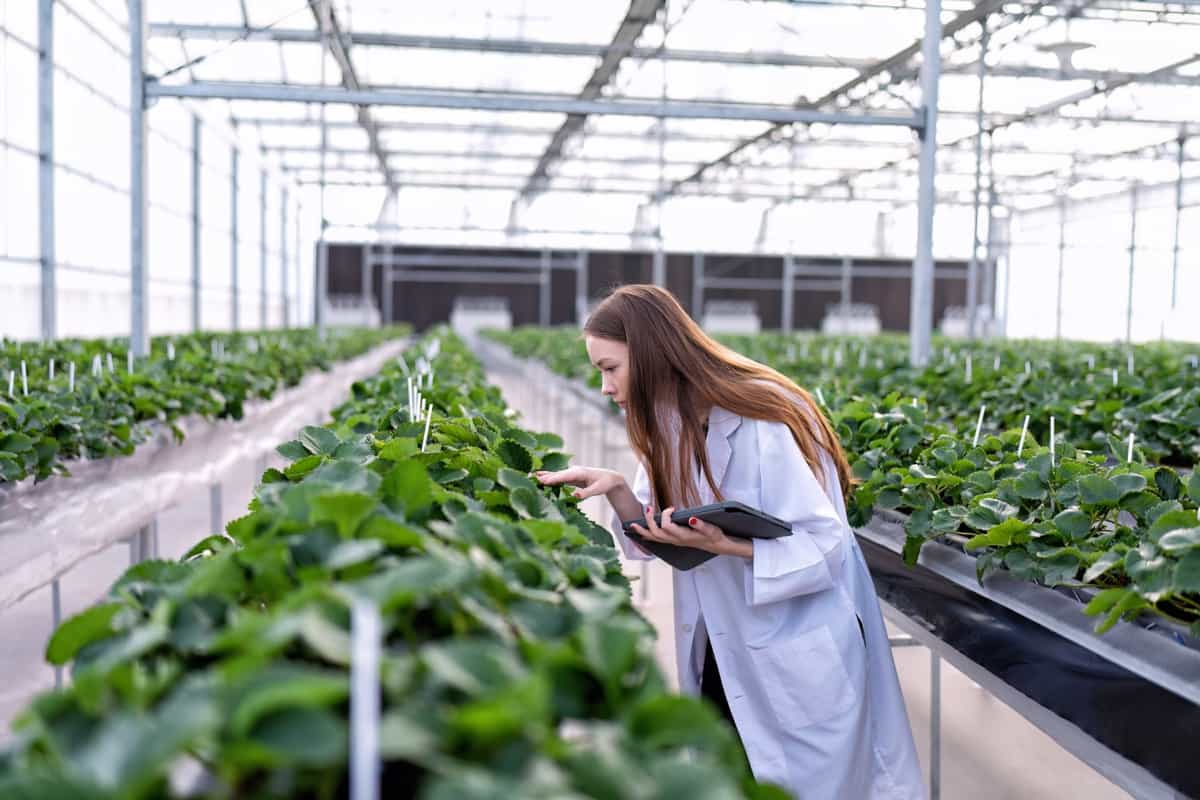
- Pruning for Health: Proper pruning is essential for maintaining the health of potato plants in a hydroponic system. Remove diseased or damaged leaves and stems to prevent the spread of infections and redirect the plant’s energy towards productive growth. Pruned plants can devote more resources to tuber development, resulting in higher yields. Use sterilized tools to avoid introducing pathogens or causing damage.
- Strategic Training: Training techniques, such as guiding plants along trellises or support structures, help to manage growth and improve light penetration. This prevents sprawling and ensures that foliage receives adequate light for efficient photosynthesis. Increased carbohydrate production leads to better tuber development and higher yields. Additionally, training creates a more organized garden space, facilitating easier monitoring of plant health.
In conclusion, regular pruning and training are essential components of successful hydroponic potato cultivation. These practices not only contribute to healthier plants and increased yields but also aid in pest and disease management. By dedicating time and effort to pruning and training, gardeners can enhance the overall productivity and quality of their hydroponic potato gardens.
Preventing and Managing Common Pests and Diseases in Hydroponic Potato Cultivation
Common pests and diseases can pose a significant threat to the success of hydroponic potato cultivation. It is crucial for gardeners to implement effective preventive measures and management strategies to ensure healthy and vigorous plants.
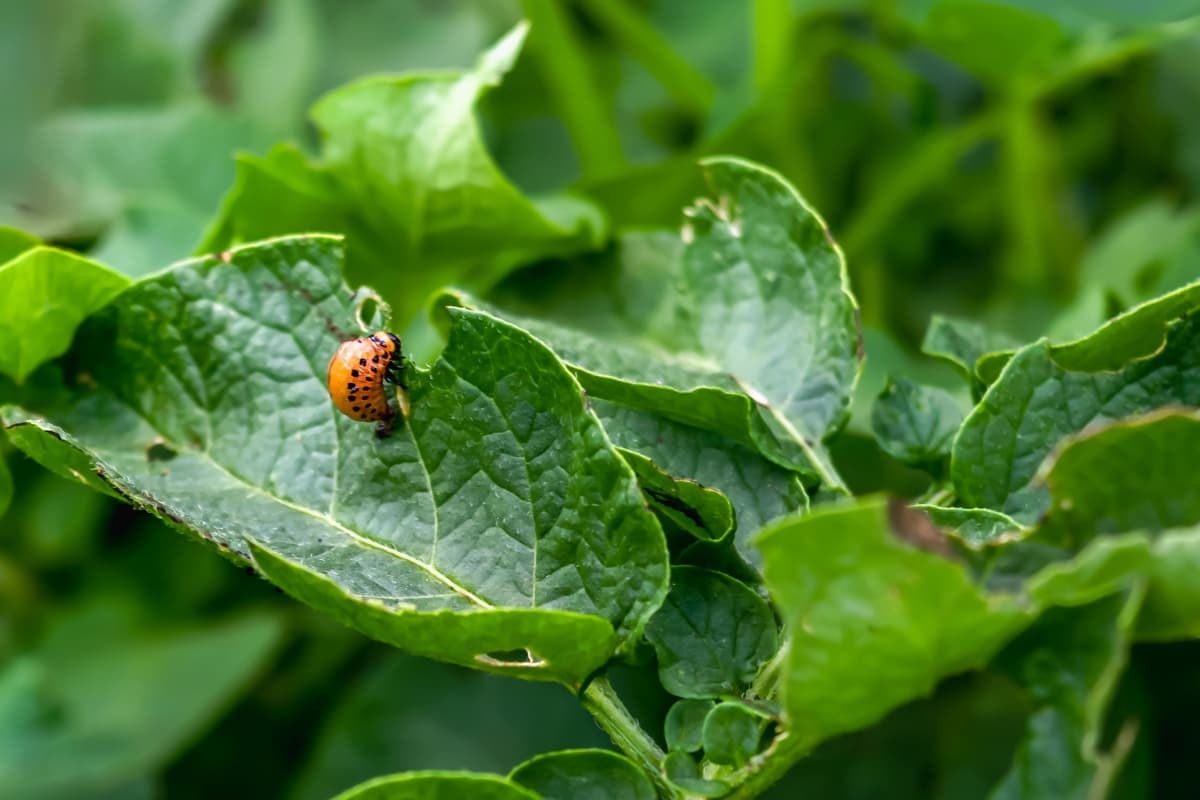
- One of the key steps in preventing pest and disease infestations is maintaining a clean and sanitized growing environment.
- Regularly cleaning and sterilizing equipment, such as trays, containers, and tools, can help eliminate any potential sources of contamination.
- In addition to cleanliness, selecting disease-resistant potato varieties is paramount.
- Some potato cultivars are naturally more resistant to certain pests and diseases, offering an added layer of protection for hydroponic growers.
- Conducting thorough research on potato varieties that are known for their resiliency to common pests and diseases can greatly minimize the risk of infestation.
By choosing resistant varieties, gardeners can significantly reduce the need for pesticide and fungicide applications, making their hydroponic potato cultivation more environmentally friendly and sustainable.
Monitoring and Adjusting pH Levels for Optimum Potato Growth
Maintaining optimal pH levels is crucial for ensuring the healthy growth and development of potato plants in a hydroponic system. The pH, or acidity/alkalinity, of the nutrient solution directly affects the availability and uptake of essential nutrients by the plants. It is recommended to monitor and adjust pH levels regularly to maintain a range between 5.5 and 6.5, as potatoes thrive in slightly acidic conditions.
- pH Monitoring Tools: Use a pH meter or test strips to monitor the acidity of the nutrient solution. Test the pH at least once a week, or more frequently if needed, to ensure proper levels. Take multiple readings from different areas for accuracy.
- Adjusting pH Levels: If pH is too high (alkaline), add pH down solution or acidifying agents like citric acid or phosphoric acid gradually. Start with small amounts and retest pH to avoid drastic changes. If pH is too low (acidic), use pH up solution or alkaline additives like potassium hydroxide. Follow manufacturer’s instructions and avoid sudden pH adjustments to prevent plant shock.
By carefully monitoring and adjusting pH levels in your hydroponic potato garden, you can create an optimal environment for nutrient absorption, fostering vigorous growth, and maximizing your potato yield.
Understanding the Role of Temperature in Hydroponic Potato Gardens
Temperature plays a crucial role in the success of hydroponic potato gardens. It directly affects the growth, development, and overall health of potato plants. Maintaining the optimal temperature range is essential for maximizing potato yield and quality.
- Temperature Range:
- Potatoes thrive in cooler temperatures, ideally between 50 to 70 degrees Fahrenheit (10 to 21 degrees Celsius).
- Different growth stages have varying temperature requirements:
- Early stages (germination and seedling establishment): Slightly higher temperatures of 65 to 75 degrees Fahrenheit (18 to 24 degrees Celsius) promote root development and fast growth.
- Vegetative and tuber development stages: Maintain a cooler temperature range to encourage healthy foliage growth and prevent excessive vine growth. Cooler temperatures also reduce the risk of diseases and pests.
- Methods for Temperature Control:
- Use a temperature-controlled environment, such as a greenhouse, for better regulation and insulation.
- Implement ventilation systems, fans, and cooling pads to control temperature and provide adequate air circulation.
- Consider using temperature sensors to maintain consistency and optimize growing conditions.
In conclusion, understanding the role of temperature in hydroponic potato gardens is crucial for achieving maximum yield and quality. By providing the right temperature conditions at each stage of growth, gardeners can ensure healthy plant development and efficient tuber production.
Harvesting Techniques for Maximum Potato Yield in a Hydroponic System
Harvesting potatoes in a hydroponic system is an exciting and rewarding process that can lead to maximum yield when done correctly. As a hydroponics expert, I believe that understanding the right techniques for harvesting is crucial for optimal results. In a hydroponic system, potatoes can be harvested at different stages of growth, depending on the desired use and size of the tubers.

band harvesting
One technique for harvesting potatoes in a hydroponic system is known as “band harvesting.” This method involves carefully digging up the plants and removing the tubers from the roots. Band harvesting is particularly effective when you want to harvest a small number of potatoes without disrupting the entire system. By gently lifting the plants from the growing medium, you can easily access the tubers without causing damage to the surrounding plants. This technique is best suited for early-harvest potatoes, which are smaller in size and ideal for dishes like salads or steamed potatoes.
Properly Cleaning and Storing Hydroponically Grown Potatoes
Properly cleaning and storing hydroponically grown potatoes is crucial to preserving their quality and maximizing their shelf life.
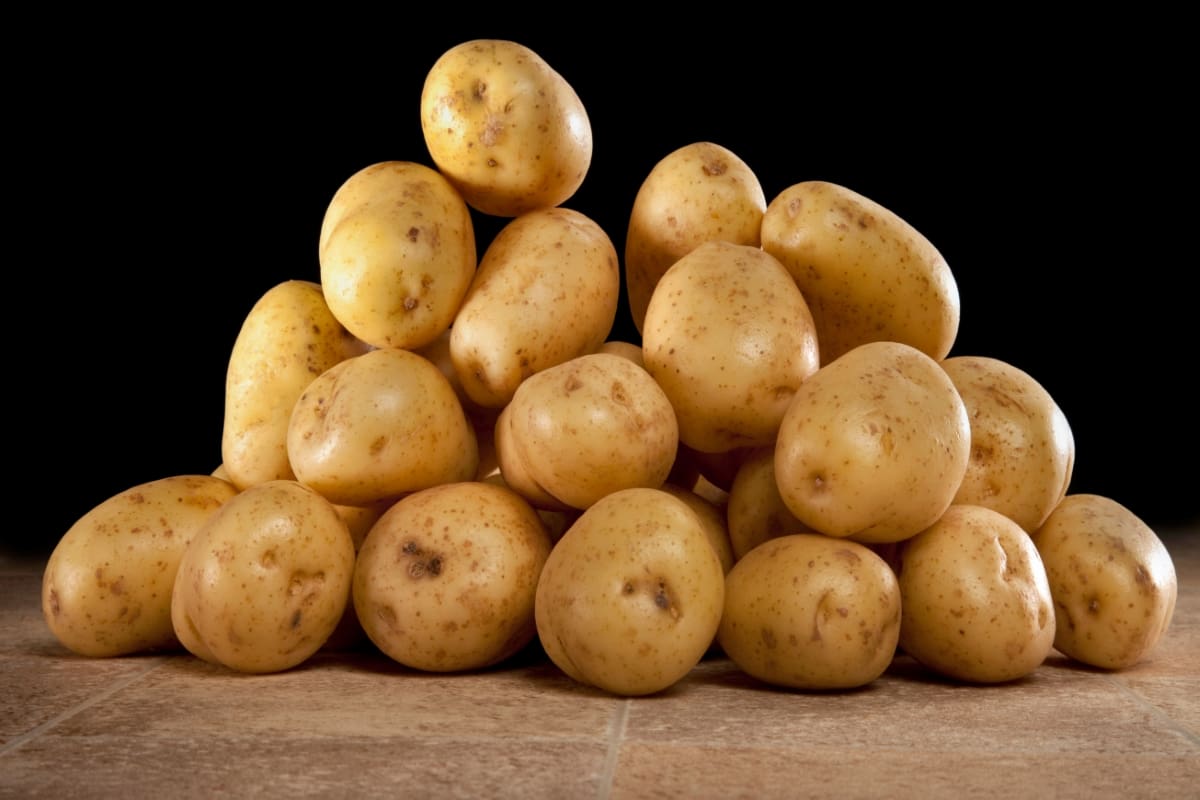
- Thorough Cleaning:
- After harvesting, gently scrub the potatoes under running water using a soft brush.
- Remove any dirt, debris, or residual nutrients to ensure they are free from contaminants.
- Avoid using excessive force or harsh chemicals to prevent damage to the delicate potato skin.
- Proper Storage Conditions:
- Store hydroponically grown potatoes in a cool, dark, and well-ventilated area.
- Ideal temperature range: 45 to 50 degrees Fahrenheit (7 to 10 degrees Celsius).
- Maintain a humidity level of 85 to 95 percent.
- Proper storage prevents sprouting and spoilage.
- Avoid Ethylene Exposure:
- Do not store potatoes near ethylene-producing fruits (e.g., apples, bananas).
- Ethylene can accelerate sprouting and spoilage.
- Regular Inspection:
- Regularly inspect stored potatoes.
- Remove any that show signs of rot or decay to prevent spoilage from spreading.
By following these simple cleaning and storage practices, you can enjoy the delicious taste of your hydroponically grown potatoes for an extended period.
Tips and Tricks for Extending the Potato Harvest Season in a Hydroponic Garden
Extending the potato harvest season in a hydroponic garden requires careful planning and certain techniques to ensure maximum yield. Here are some tips and tricks to help you achieve an extended harvest:
1. Successive Planting: Instead of planting all your potatoes at once, consider staggering your planting schedule. This means planting a portion of your seed potatoes every few weeks, ensuring a continuous harvest throughout the growing season. By doing so, you can enjoy fresh potatoes for a longer period.
2. Utilize Extended Harvest Varieties: Some potato varieties are specifically bred to have a longer harvest period. These varieties produce potatoes of different sizes and maturity rates, allowing you to harvest them over an extended period. Examples of extended harvest potato varieties include ‘Caribe,’ ‘Red Pontiac,’ and ‘Yukon Gold.’
Tips and Tricks for Extending Potato Harvest Season in a Hydroponic Garden
| Aspect | Recommendations |
|---|---|
| 1. Variety Selection | – Late-Season Varieties: Choose potato varieties with a longer maturation period. |
| – Successive Planting: Plant different varieties with varied harvest times. | |
| – Research Options: Select varieties suited for hydroponic growth and extended harvest. | |
| 2. Temperature Control | – Maintain Cool Conditions: Keep the hydroponic system in a cool environment, especially during the growing season. |
| – Optimal Temperature Range: Potatoes thrive in temperatures between 60°F to 70°F (15°C to 21°C). | |
| – Provide Shade: Shield plants during hotter periods to prevent stress. | |
| 3. Light Management | – Extended Light Exposure: Provide artificial light to supplement shorter daylight periods. |
| – Adjustable Light Intensity: Adjust light intensity based on growth stages and seasonal changes. | |
| – Maintain Consistent Light: Ensure a consistent light schedule to mimic optimal growing conditions. | |
| 4. Nutrient Optimization | – Balanced Nutrient Solution: Maintain a balanced nutrient solution with essential macro and micronutrients. |
| – Potassium Boost: Increase potassium levels during the tuber formation stage. | |
| – Monitor and Adjust: Regularly monitor nutrient levels and adjust as needed for specific growth phases. | |
| 5. Harvest Techniques | – Partial Harvests: Harvest mature potatoes selectively, allowing others to continue growing. |
| – Continuous Monitoring: Regularly check for mature tubers and harvest as they reach optimal size. | |
| – Gentle Harvesting: Handle plants and tubers with care to avoid damage during harvesting. | |
| 6. Managing Tuber Formation | – Encourage Stolon Growth: Promote stolon development for increased tuber production. |
| – Avoid Overcrowding: Ensure adequate spacing between plants to prevent competition for resources. | |
| – Regular Inspection: Monitor plants for signs of tuber initiation and adjust growing conditions accordingly. | |
| 7. Disease Prevention | – Hygiene Practices: Maintain a clean hydroponic system to prevent the spread of diseases. |
| – Quarantine New Additions: Quarantine new plants to avoid introducing diseases. | |
| – Fungicide Application: Apply fungicides preventively to protect against common potato diseases. | |
| 8. Pruning and Training | – Remove Excess Foliage: Prune excessive foliage to redirect energy toward tuber development. |
| – Train Vertical Growth: Encourage vertical growth to maximize space utilization and support tuber growth. | |
| – Lateral Shoot Removal: Trim lateral shoots to focus energy on the main plant and tubers. |
By implementing these tips and tricks, you can effectively extend the potato harvest season in your hydroponic garden. However, it is worth noting that each hydroponic system and growing environment may have its own unique characteristics and requirements. Thus, it is essential to experiment and adapt these techniques to your specific setup for optimal results.
Troubleshooting Common Issues
Troubleshooting common issues in hydroponic potato cultivation is essential to ensure optimal plant growth and yield.

- Nutrient Deficiency Management: Regularly monitor the nutrient solution to prevent deficiencies. Conduct water and nutrient testing to adjust levels according to growth stages. Choose a nutrient solution specifically formulated for hydroponic potatoes to meet their unique needs.
- Pest and Disease Control: Practice strict hygiene to prevent pests and diseases. Sanitize tools and equipment regularly and inspect plants for signs of infestation or illness. Utilize organic pest control methods, such as beneficial insects, and biological treatments safe for hydroponic systems. Maintain optimal environmental conditions and promptly remove affected plants to prevent pathogen spread.
Troubleshooting common issues in hydroponic potato cultivation requires attentiveness and proactive measures. By diligently monitoring nutrient levels and implementing effective pest and disease management strategies, growers can minimize the impact of challenges and maximize the success of their hydroponic potato garden.
Watch more in the video:
FAQ
What are some common issues that can arise when growing potatoes in a hydroponic garden?
Some common issues that can arise when growing potatoes in a hydroponic garden include nutrient deficiencies, pest infestations, disease outbreaks, pH imbalances, and inadequate lighting.
How can I prevent nutrient deficiencies in my hydroponic potato garden?
To prevent nutrient deficiencies, it is important to choose the best nutrient solution for optimal potato growth and regularly monitor and adjust pH levels. Providing the right balance of essential nutrients is crucial for healthy potato plants.
What are some signs of pest infestations in a hydroponic potato garden?
Signs of pest infestations in a hydroponic potato garden can include wilting or yellowing leaves, holes in the leaves or tubers, presence of insects or larvae, and stunted growth. Regular monitoring and implementing pest control measures can help prevent and manage pests.
How can I prevent diseases in my hydroponic potato cultivation?
To prevent diseases in hydroponic potato cultivation, it is essential to properly clean and sterilize equipment before use, ensure good air circulation, and avoid overwatering. Additionally, selecting disease-resistant potato varieties and promptly addressing any signs of disease can help prevent their spread.
What should I do if my hydroponic potato plants are not growing properly?
If your hydroponic potato plants are not growing properly, you should first check for any nutrient deficiencies or pH imbalances. Adjusting the nutrient solution and pH levels accordingly can often help improve plant growth. Additionally, ensuring adequate lighting, proper pruning and training, and maintaining an ideal growing environment are important factors to consider.
Can I extend the potato harvest season in my hydroponic garden?
Yes, you can extend the potato harvest season in a hydroponic garden by implementing certain techniques. This includes staggered planting, where you plant potatoes at different times to have a continuous harvest, and using artificial lighting to control the photoperiod and promote extended growth.
How should I clean and store hydroponically grown potatoes?
To clean and store hydroponically grown potatoes, gently brush off any dirt or debris, rinse them with water if necessary, and allow them to dry completely. Store the potatoes in a cool, dark, and well-ventilated area such as a cellar or pantry. Avoid storing them near fruits or vegetables that release ethylene gas, as it can cause sprouting and spoilage.

Studied Agricultural Engineering-Plant Protection at University of California, Davis.
Head of Content writing team at Southelmontehydroponics.com

